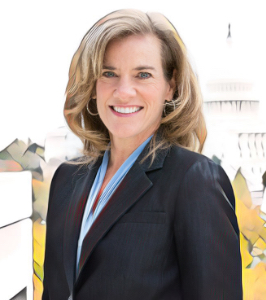Supreme Court continues to shift religious liberty landscape
This Supreme Court is reshaping religious liberty without deference to principles that have protected it for decades.

The U.S. Supreme Court’s term that ended in June has been described as one of the most consequential in history. Decisions immediately affected abortion access, gun regulation and environmental protections. The Court also decided two important cases that reflect an ongoing shift in church-state law. Because the cases implicate two broad areas — government funding and religious expression — the decisions will likely have an impact far beyond the settings in which they arose.
First, in Carson v. Makin, the Court held that the state of Maine could not exclude religious schools from a tuition assistance program that allowed a state-funded education through private schools for the most rural districts. One of the state’s criteria for participating private schools was that they are nonsectarian, which is consistent with the state’s public school standards. Some parents sued seeking state funding to send their children to private, religious schools.
Though the Supreme Court previously upheld a state-funded voucher program that was intended to give parents a broad range of school choices including religious schools in Zelman v. Simmons-Harris (2002), none of the justices suggested that states were required to include religious education.
The Carson decision, however, follows a recent line of cases rejecting “no establishment” principles and holding that the Free Exercise Clause prohibits discrimination against religious institutions in government funding programs. In both Trinity Lutheran v. Comer (2017) and Espinoza v. Montana (2020), the Court rejected state efforts to avoid funding religion. Despite state constitutions that prohibited tax support for religious institutions, the Court held that the states could not exclude entities based on their religious status. In Carson, the Court went further, striking an exclusion that was more clearly geared to avoid state funding of an explicitly religious use: religious education.
The decision does not require states to fund religious schools absent a program that funds other private schools. It allows more opportunities for state funding of religious institutions, reducing expectations for the separation of church and state. The decision ignores the distinctiveness of religious education that has historically justified its different treatment.
In Kennedy v. Bremerton, decided by the same 6-3 majority, the Court held that a public high school football coach had a free speech and free exercise right to pray on the 50-yard line after games, and it held that the facts did not violate the Establishment Clause. The Court’s ruling rested on a narrow set of facts after the coach had been disciplined and stopped leading religious practices with his players. The Court dismissed the contention that the coach’s prayers at midfield were a continuation of prior practices or a government endorsement of religion. Instead, the majority stated: “The contested exercise before us does not involve leading prayers with the team or before any other captive audience.”
Viewed on those facts alone, the decision may be explained as simply upholding a line between individual prayer that is protected by the First Amendment and government-sponsored prayer that is prohibited by the same amendment. It provides no support for official school-sponsored religious practices. Nor does it support religious exercises by school officials that expressly coerce student participation.
Yet the opinion fundamentally changes expectations about how the government will protect religious liberty. Justice Neil Gorsuch’s majority opinion didn’t discuss the important school prayer cases that have provided guidance to schools for nearly seven decades. It didn’t address the distinct roles and relative positions of influence of students and teachers that should matter in this school context, as urged in a BJC-led amicus brief in the case. Instead, the Court explicitly abandoned the long-standing Lemon test often used in Establishment Clause cases. That test from a 1971 case has helped avoid government interference in religion by requiring that government actions have a secular purpose and a primary effect that neither advances nor inhibits religion, and it requires that the government avoids becoming entangled with religion.
Leaving lower courts with little guidance (other than reference to “historical practices and understandings”), this Court is reshaping religious liberty without deference to principles that have protected it for decades. Whether its approach results in greater conflict over religion or simply more religion in government spheres seems something the Court is willing to risk.
Holly Hollman is general counsel of BJC. A longer version of this column is available on the website of The Christian Citizen.
This column is from the fall 2022 edition of Report from the Capital. You can download it as a PDF or read a digital flip-through edition.




